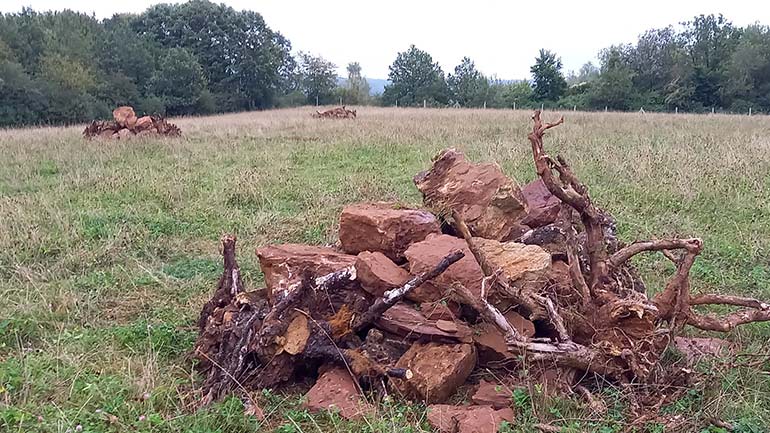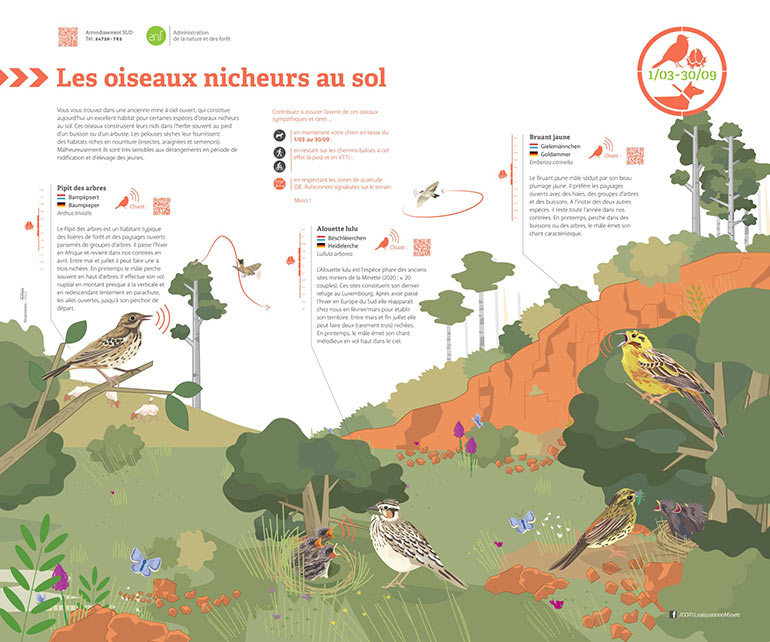On Sunday 27 March, join us on a discovery tour in the Schëfflengerbierg-Lallengerbierg core zone of the Minett UNESCO Biosphere. As part of our MiNELL programme, Minett Natur an Ëmwelt Léier Lab, you can take part in a guided walk to get to know the secret stars of our biosphere reserve: the woodlark.
You can sign up here: MiNELL – The song of the woodlark
 © Jàn Svetlík published on Flickr
© Jàn Svetlík published on Flickr
At the beginning of March, the woodlark returns to the Minett after spending the winter in southern Europe. As soon as they arrive, the courtship begins, characterized by the males trying to attract the females by singing.
Therefore, the end of March is an ideal time to observe the woodlark in its natural habitat.
Interactive observation on 27th of March
Sunday 27, you will get to know the woodlark with biologist Jan Herr, who is responsible for the protection of the former open-cast mines in the Minett UNESCO Biosphere. The scientist from the Nature and Forestry Administration will explain the habitat of the woodlark and participants will have the opportunity to observe them in their habitat. You will be given details of the bird’s protection status and participants will be asked to advise us on how to promote measures to preserve and enhance its habitat.
 © Jan Herr / Photo of a shelter built especially for the woodlark
© Jan Herr / Photo of a shelter built especially for the woodlark
The 4 km hike (approx. 3 hours) will start at 8.30 a.m. The meeting point is the car park of the Jean Jacoby Stadium in Schifflange. Hiking shoes and weather-appropriate clothing will be useful and binoculars will facilitate the observation of the woodlarks. Explanations during the visit can be given in Luxembourgish, German and French.
Strictly protected throughout the European Union
The woodlark is critically endangered, in Luxembourg the total population is estimated to be less than 30 pairs. The species nests on the ground, mainly in dry grasslands. As a result, the nest is exposed to the danger of natural predators such as foxes, martens and wild boars.
In addition, there is the disturbance often caused by people walking or riding mountain bikes through the protected areas.
The Nature and Forestry Administration is committed to the conservation and recolonization of the woodlark’s habitat by implementing a variety of protection measures in the core areas of the UNESCO Biosphere Reserve. The first successes are already visible. From 2019 to 2021, the number of breeding pairs in the area of Luxembourg’s only biosphere reserve has increased from 19 to 23 pairs.




